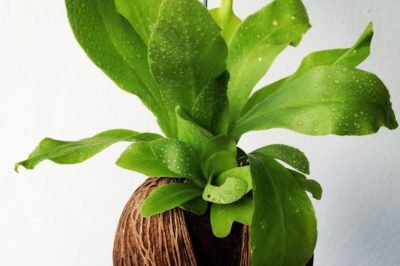Light for Bird’s Nest Fern
An understory plant, Bird’s Nest Fern does not handle long periods of bright, direct sunlight. It prefers filtered to light shade. An east or north window is usually the best choice. If the window receives full sun, it should only be in the early morning. Use a translucent shade or blind for protection. You can also use commercial full-spectrum grow lights in darker rooms.
Watering a Bird’s Nest Fern
A jungle plant, the Bird’s Nest Fern evolved in areas where humidity is always high. However, they are epiphytic, which means that soggy soil can cause problems. Use a rich soil – such as peat and perlite mix – that drains well. Water often enough to keep the soil moist. A humidifier, regular twice daily misting or the use of trays filled with pebbles in water also helps boost humidity.
Temperature for Bird’s Nest Fern
- A jungle plant, the Bird’s Nest Fern must have adequate warmth. It needs:
Upper temperature around 80°F (21°C). - Lower temperature of about 70°F (27°C).
- Warmth during dormancy – try a heating pad.
- Minimal exposure to lower temperatures – plants suffer when exposed to temperatures below 55°F (13°C) for prolonged periods.
Fertilizer for Bird’s Nest Fern
It’s important to provide nutrients for this plant but over-fertilization can be detrimental. Better to feed less than to overdo. With a liquid fertilizer, dilute with water by one-half to one-quarter. Feed every one to two weeks. If you use timed release pellets, place them only on the soil, not in the central leaf rosette.
Repotting Bird’s Nest Fer
Bird’s Nest Fern is one of those plants that prefers tight quarters. It’s better to under-pot slightly than to give it too much room. You should repot once a year or every other year. Use a pot that promotes good drainage and fresh potting soil. Choose a pot that is only one size up from the current pot.
Problems with Bird’s Nest Fern
Scale is the most likely insect problem. Wipe off with a damp cloth and use an organic insecticide. Low humidity causes brown tips on the fronds. If the plant doesn’t seem to be growing and fronds are pale, it may need more fertilizer. Excess sunlight can also cause pale fronds. Over-watering usually results in a plant looks like it’s wilting, with limp, drooping fronds.
